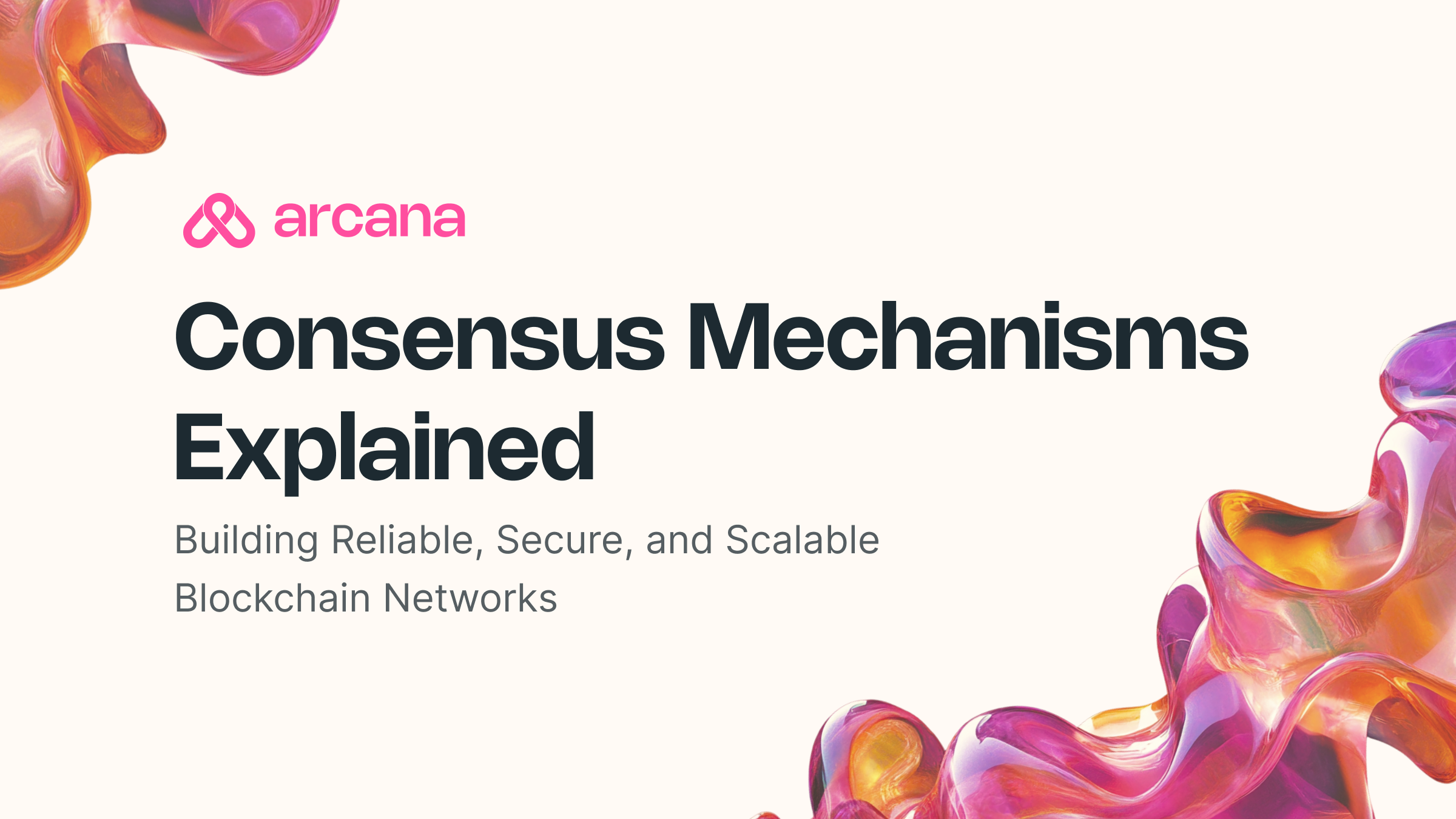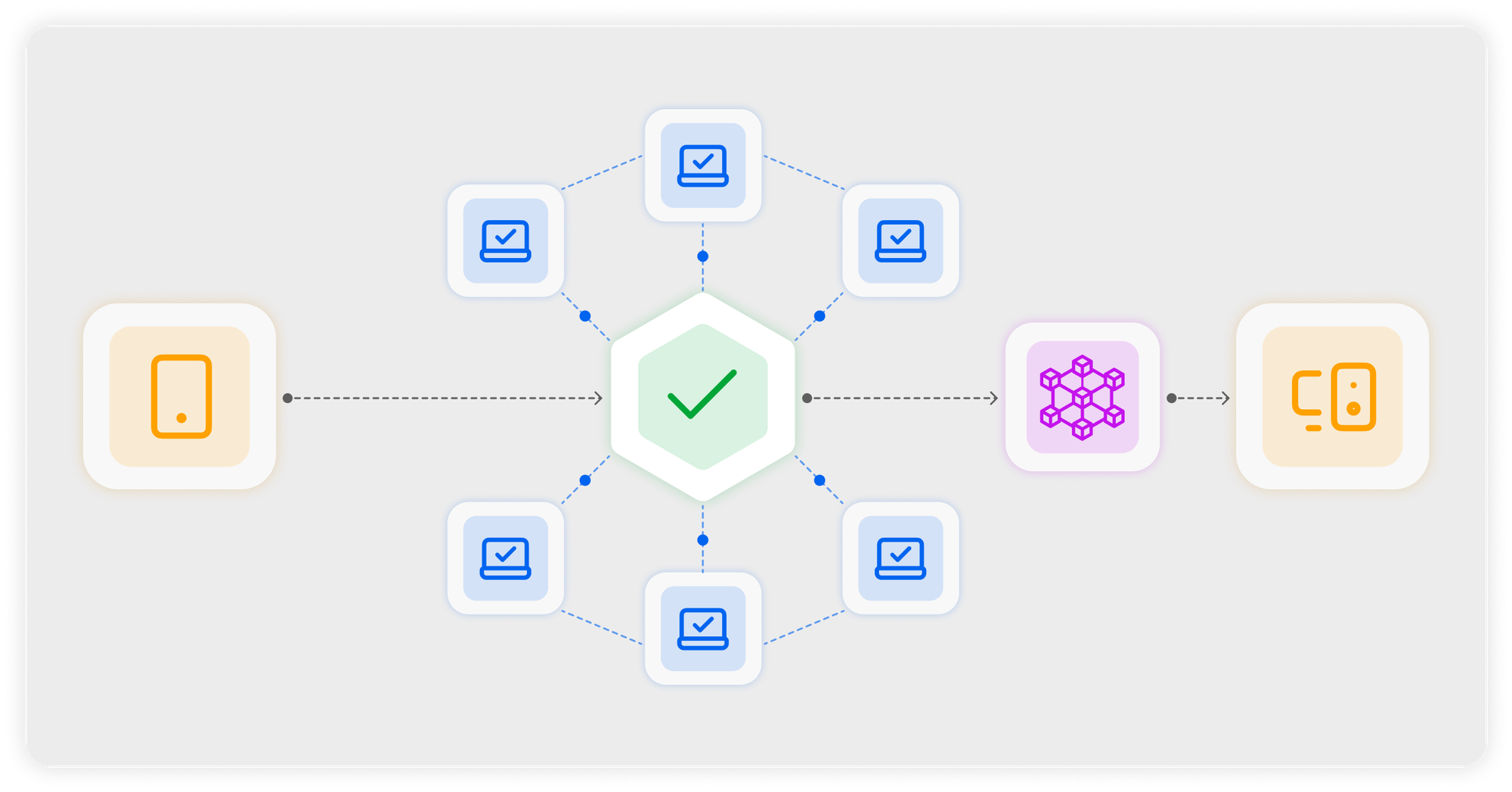Building Decentralized Networks: Picking the Right Consensus

Blockchains have transformed how we think about trust, data, and transactions. Cryptography, economic incentives, and distributed consensus are the cornerstone of building the next generation of trust-minimized Web3 apps and services. These trust-minimized platforms allow users to interact directly with each other securely and predictably, even if they don't know or trust each other. They reduce the need for trust between parties by making transactions transparent, verifiable, and irreversible.
Consensus algorithms are critical in building trust and security in a decentralized system. But how do these decentralized networks agree on the validity of transactions? This is where Blockchain Consensus comes into play.
What is Blockchain Consensus?
At its core, blockchain consensus is the agreement of all nodes in a network on a single, accurate record of transactions. It keeps everyone on the same page without needing a central authority.
This is critical in a decentralized system. Without it, nodes could have conflicting data, causing chaos and insecurity. Consensus ensures honest nodes agree on the same transactions and block order, maintaining integrity and security.

Types of Consensus Mechanisms
Blockchain consensus mechanisms are not one-size-fits-all. Different approaches suit different use cases, each with strengths and trade-offs based on the Web3 application’s requirements. Here are the main types:
1. Byzantine Fault Tolerance (BFT)
Byzantine Fault Tolerance is a concept where the system can still function properly even if some nodes (up to one-third) act maliciously or fail. These systems are specifically designed to handle Byzantine faults, where faulty nodes send conflicting or deceptive messages.
- How It Works: In BFT-based systems, consensus is reached through a series of rounds in which nodes vote on which blocks are valid. If enough nodes agree on a block (usually two-thirds or more), the block is appended to the blockchain.
- Examples: Practical Byzantine Fault Tolerance (PBFT), Tendermint.
- Use Case: Permissioned blockchains where performance and finality are critical.
- Ideal for: Permissioned blockchains with a known set of participants and trusted nodes.
2. Proof of Something (PoX)
Proof of Something (PoX) consensus mechanisms require participants to demonstrate some form of proof to earn the right to add a block to the blockchain. This “proof” often comes in the form of computational work, tokens staked, or other verifiable resources.
- How It Works:
- Proof of Work (PoW): Nodes solve complex puzzles to earn the right to add a block.
- Proof of Stake (PoS): Validators are chosen based on staked tokens.
- Proof of Authority (PoA): Validators are pre-approved entities.
- Examples: Bitcoin (PoW), Ethereum (PoS).
- Use Case: Public, permissionless blockchains where decentralization and trustless interactions are essential.
- Ideal For: Permissionless, decentralized blockchains, where nodes might not know or trust each other.
3. Hybrid Consensus
Hybrid consensus mechanisms combine the strengths of both BFT and PoX systems, offering a flexible approach that balances security, decentralization, and performance.
- How It Works: Hybrid systems might use a PoW mechanism to select a set of validators, who then use BFT-like protocols to reach finality more efficiently. These systems aim to improve transaction throughput and reduce latency while maintaining strong security guarantees.
- Examples: Delegated Proof of Stake (DPoS), PoW + PBFT hybrid systems.
- Use Case: Blockchains that need both scalability and Byzantine fault tolerance, often seen in enterprise settings or permissionless hybrid chains.
- Ideal for: Blockchains that need a balance between decentralization and scalability.
Choosing a Consensus Mechanism
They say, "Measure twice, cut once." But let’s face it—cutting is way more fun, especially when building trust-minimized decentralized networks. Still, picking the correct blockchain consensus needs careful thought. It shapes performance, security, scalability, and energy use.

Here’s what to consider when making your choice:
- Security: A consensus mechanism must prevent double-spending, 51% attacks, and network manipulation. It must guarantee that transactions are correctly validated and cannot be reversed once confirmed.
Use Case: Blockchains dealing with sensitive data or financial transactions where security is paramount.
- Scalability: As blockchain networks grow, so does the volume of transactions. Scalability refers to the efficiency of the system as the system scale and workload increase. There are two metrics to measure blockchain scalability: transaction throughput and transaction confirmation latency. These metrics need to be maintained as the network grows.
Use Case: High-volume industries such as finance and e-commerce, where large-scale transaction processing is critical.
- Decentralization: Blockchain’s value lies in its decentralized nature. A consensus mechanism must ensure that no single participant or entity can control the network. This promotes fairness, transparency, and security.
Use Case: Public, permissionless blockchains that prioritize decentralization and trustless operations.
- Consensus Finality: Consensus finality ensures that once a transaction is added to the blockchain, it cannot be altered or reversed. This is important in applications where trust is critical, like financial systems.
Use Case: Use cases where transaction finality is crucial, such as banking or real-time financial applications.
- Cost Efficiency: Some consensus mechanisms can be resource-heavy, requiring significant time, computing power, and energy—Proof of Work (PoW) is a prime example, notorious for its high energy consumption. With growing concerns about blockchain's environmental impact, energy-efficient alternatives like Proof of Stake (PoS) have gained traction.
Use Case: Public blockchains aiming to reduce their environmental footprint, such as Ethereum’s transition to PoS.
- Speed: The speed at which consensus is reached impacts overall network performance. A fast consensus mechanism is necessary for real-time applications where immediate transaction processing is vital. This entails a high TPS and quick finality.
Use Case: Real-time systems, such as gaming or high-frequency trading, where latency must be minimized.
Examples of Fast Consensus
Some blockchains excel at handling high transactions per second (TPS), including:
- ICP (Internet Computer): Ability to process thousands of transactions per second.
- Solana: Offers high throughput and low-cost transactions, making it ideal for decentralized applications.
- TRON: Optimized for high-speed transactions and scalability.
- Stellar: Focused on fast, low-cost payments across borders.
- NEAR Protocol: Positioned as the scalable platform for decentralized apps and crypto economies.
Platforms like Chainspect provide insights into transaction speeds and performance metrics across blockchains for a more detailed comparison.
Some examples of Consensus Implementations
- https://github.com/sei-protocol/sei-chain/tree/main
- https://github.com/aptos-labs/aptos-core/tree/main/consensus
- https://github.com/stellar/stellar-core
What is right for Arcana?
In the context of Arcana's Chain Abstraction Protocol, speed is critical. We need to process intents as quickly as possible to enable solvers to fill them promptly. Therefore, a high throughput (TPS) protocol and fast finality would be the ideal choice. While other factors, such as security and decentralization, are important, they are more nuanced and must be carefully balanced.
Conclusion
Blockchain consensus drives the security, performance, and integrity of decentralized networks. Choosing the right mechanism depends on security, scalability, energy efficiency, and decentralization needs.
Whether for a permissioned enterprise or a public network, understanding consensus options ensures you pick one that aligns with your goals—delivering a secure, efficient, and sustainable blockchain. Measure twice, choose wisely, and lay the groundwork for trust-minimized dApps and decentralized services.

